

YAZILIKAYA ( INSCRIBED ROCK )
A HITTITE SANCTUARY
Yazılıkaya (Turkish: Inscribed rock) was a sanctuary of Hattusa, the capital city of the Hittite Empire, today in the Çorum Province, Turkey. Rock reliefs are a prominent aspect of Hittite art, and these are generally regarded as the most important group.
This was a holy site for the Hittites, located within walking distance of the gates of the city of Hattusa. It had two main chambers formed inside a group of rock outcrops. Access to the roofless chambers were controlled by gateway and building structures built right in front of them, however only the foundations of those structures survived today. Most impressive today are the rock reliefs of Chambers A and B portraying the gods of the Hittite pantheon. One of the uses of the sanctuary may have involved the New Year's celebrations ceremonies. A 2019 journal article by Rita Gautschy and Eberhard Zangger suggested that the place may have served as a time-keeping device, with the carvings serving as markers for lunar and solar movement. It was in use at least since late 16th century BCE, but most of the rock carvings date to the reign of the Hittite kings Tudhaliya IV and Suppiluliuma II in the late 13th century BCE, when the site underwent a significant restoration.

Click on the pic. to zoom in
Category: Sanctuary
Civilisation: Hittite, Phyrigia
The most impressive is Chamber A, which contains rock-cut relief of 64 deities in procession. The left wall shows a procession of male deities, wearing the traditional kilts, pointed shoes and horned hats. Mountain gods are also shown with scaled skirts to symbolise the rocky mountains. The right wall shows a procession of female deities wearing crowns and long skirts. The only exception to this divide is the goddess of love and war, Shaushka (Mesopotamian goddess Ishtar/Inanna) who is shown on the male procession with two female attendants. This is likely to be because of her male attributes as the goddess of war. The processions lead to a central scene of the supreme couple of the pantheon: the storm-god Teshub and the sun-goddess Hebat. Teshub stands on two mountain gods whilst Hebat stands on a panther. Behind Hebat are shown their son Sharruma, daughter Alanzu and a granddaughter.
The smaller and narrower Chamber B has fewer but larger and better preserved reliefs. It may have served as a mortuary mausoleum or memorial for the Hittite king Tudhaliya IV.
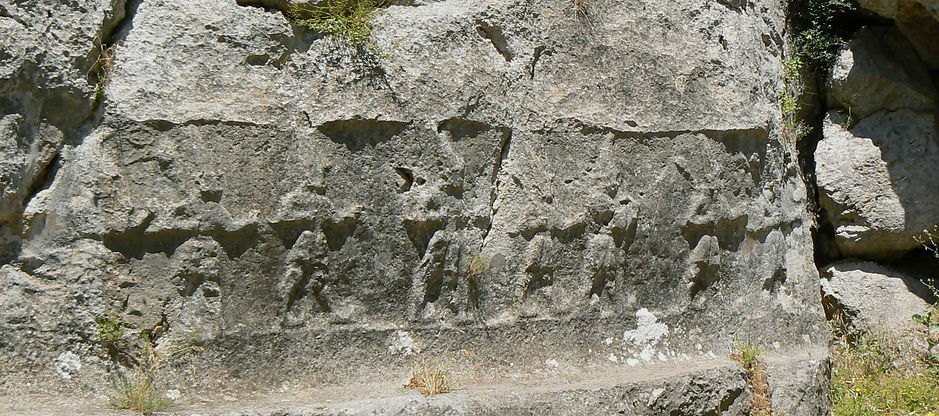
Click on the pic. to zoom in
Reliefs of two Hittite mountain gods and divinites with no identification, Yazilikaya, Hittite rock sanctuary, Anatolia, Turkey
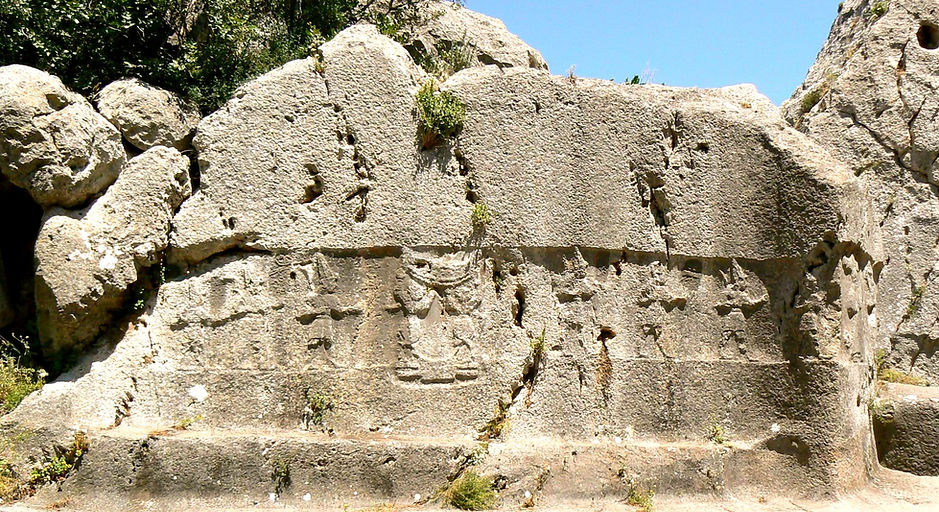
Click on the pic. to zoom in
Reliefs of two three gods, two creatures, the war god Heshue, the god Pirinkir, a god with no identification and the another war god Ashtabi, Yazilikaya, hittite rock sanctuary, Anatolia, Turkey
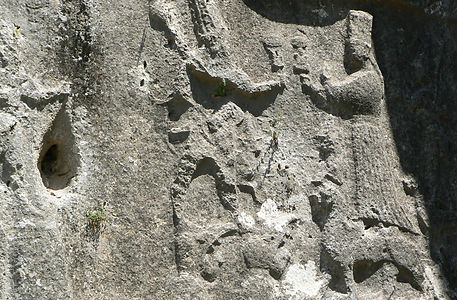
The hittite gods Teshub and Hebat, chamber A, Yazilikaya, hittite rock sanctuary,
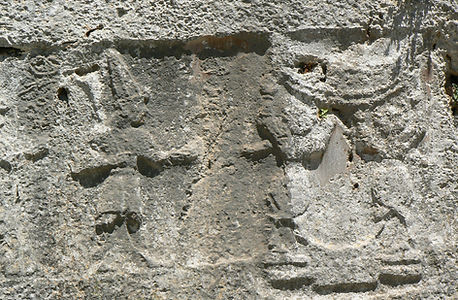
Reliefs of Nergal, god of the underworld and two creatures with the hindquarters of a bull but with a hunan torso and arms, Yazilikaya, hittite rock sanctuary
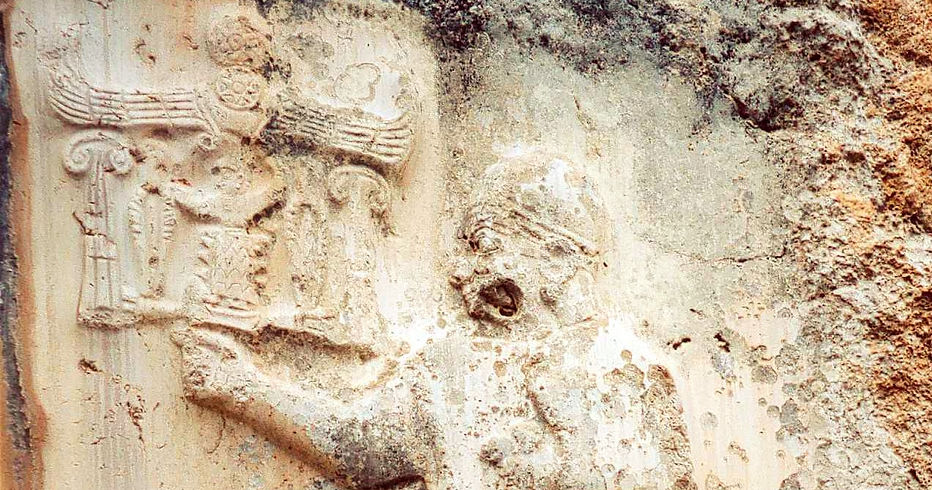
Tudhaliya IV, great king of the Hittites. Relief in Yazılıkaya, Turkey.
Reseemblence of the symbol next to him with the famous Egyptian symbol is interesting.






